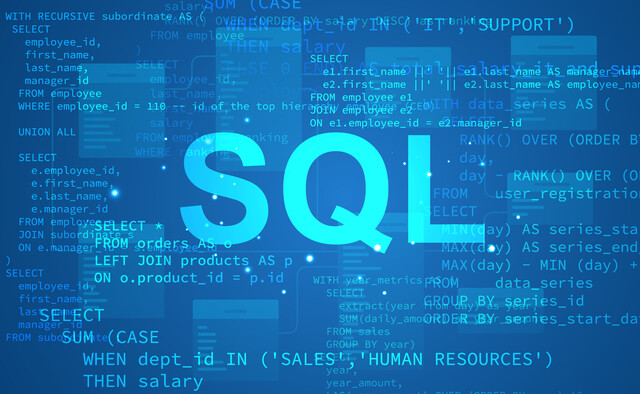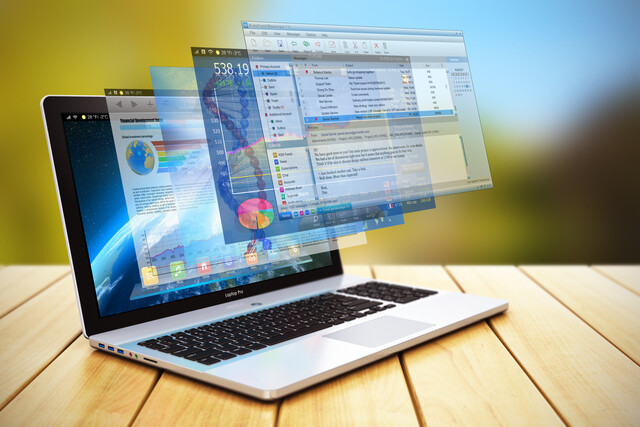MySQL
Master Data with MySQL: Unlock the Power of Precision

8 Hours average completion time
0.8 CEUs
11 Lessons
11 Exams & Assignments
27 Discussions
11 Videos
22 Reference Files
109 Articles
Mobile Friendly
Last Updated December 2025
Master MySQL: Propel Your Web Development to the Next Level
In the vast world of web development and database management, the choice of tools and platforms can make or break the efficiency and scalability of your applications. Enter MySQL -- an open-source dynamo that not only offers cost-effectiveness but also packs the punch required to create robust, scalable, and dynamic web applications. But, like any powerful tool, the magic lies in mastering its potential. Whether you're crafting a new website or integrating a data-rich application, understanding MySQL's depths is pivotal. Our course is here to ensure you unlock MySQL's unparalleled capabilities, transforming your projects from good to extraordinary.
Why MySQL Stands Out: Begin your journey with an overview of MySQL's landscape, diving into its history, core strengths, and why it consistently ranks among the top choices for database management. As we shed light on its advantages over its counterparts, you'll be equipped with the knowledge to justify its application in your projects.
Designing with Precision: At the heart of every robust application lies the intricate design of its tables. These are the foundational pillars that hold your data, determining not just storage efficiency but also data integrity. In this segment, we take you through the art and science of table design, emphasizing data modeling and integrity to protect your data from potential pitfalls like corruption or misinterpretations.
Crafting for Scalability: In the digital realm, stagnation can be detrimental. As your application grows, your database should evolve seamlessly alongside. We emphasize the principles of forward-thinking design, allowing you to visualize your application not just for its immediate needs, but for its future growth. Understand the nuances of architecture and habits that ensure when you scale, you do so with grace and efficiency, avoiding the pitfalls of retrospective adjustments.
Maintenance and Configuration Mastery: A well-designed database, like a finely-tuned engine, requires regular maintenance. Delve into the essentials of keeping your MySQL database running at its peak, exploring techniques, tools, and best practices that ensure longevity and optimum performance.
Building for Tomorrow: Beyond the technicalities, we also aim to instill a mindset of proactive planning. While designing for today, always have an eye on tomorrow. Learn the strategies that empower you to craft solutions that can stand the test of time and adapt to changing scenarios.
Future-Proof Your Projects with MySQL: In an era defined by rapid technological evolution, staying ahead of the curve is paramount. With this course, you're not just learning a tool; you're investing in a skill set that ensures your projects, whether personal or professional, have the foundational strength to evolve, adapt, and thrive.
Step into the realm of MySQL mastery and let's revolutionize the way you approach web development and database management. Your journey from novice to expert begins here!
- Efficient user and privilege management
- Scalable database architecture design
- MySQL server configuration expertise
- Proactive future-proofing tactics
- Advanced SQL query proficiency
- Data replication and synchronization methods
- Backup and restoration techniques mastery
- Table design and development skills
- Data manipulation and maintenance strategies
- Data modeling and integrity enhancement
-

Adobe Captivate
-

Learn HTML - Create Webpages Using HTML5
-

Adobe Illustrator
-

Developing Great Social Skills
-

Introduction to Logic
-

Computer Literacy Level 2 - Internet Basics
-

Adobe InDesign
-

Cybersecurity 101
-

Computer Literacy Level 1 - Computer Basics
-

Introduction to CSS
-

Introduction to SQL
-

Adobe After Effects
-

Final Cut Pro X
-

Ultimate Excel Training Bundle
-

Computer Literacy Level 3 - Living and Working Online
-

Google Docs
-

Google Sheets
-

Introduction to JavaScript
-

Adobe Photoshop
-

Adobe Muse
-

MySQL
-

Google Slides
-

Adobe Premiere